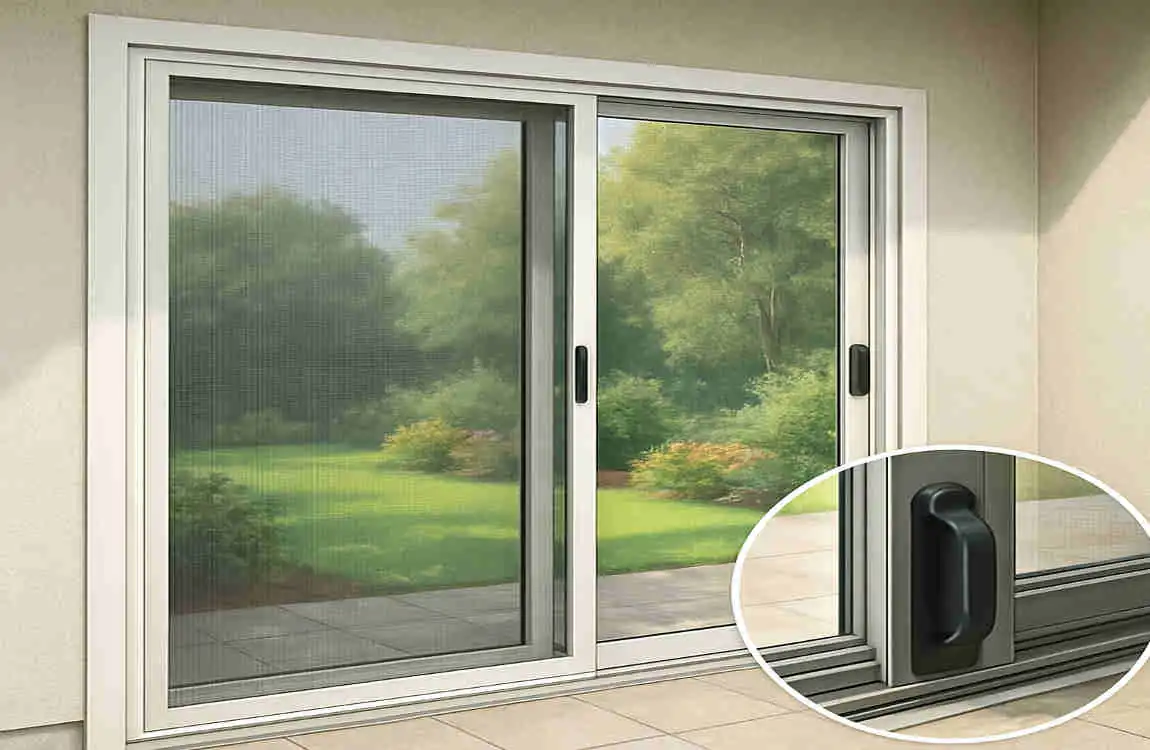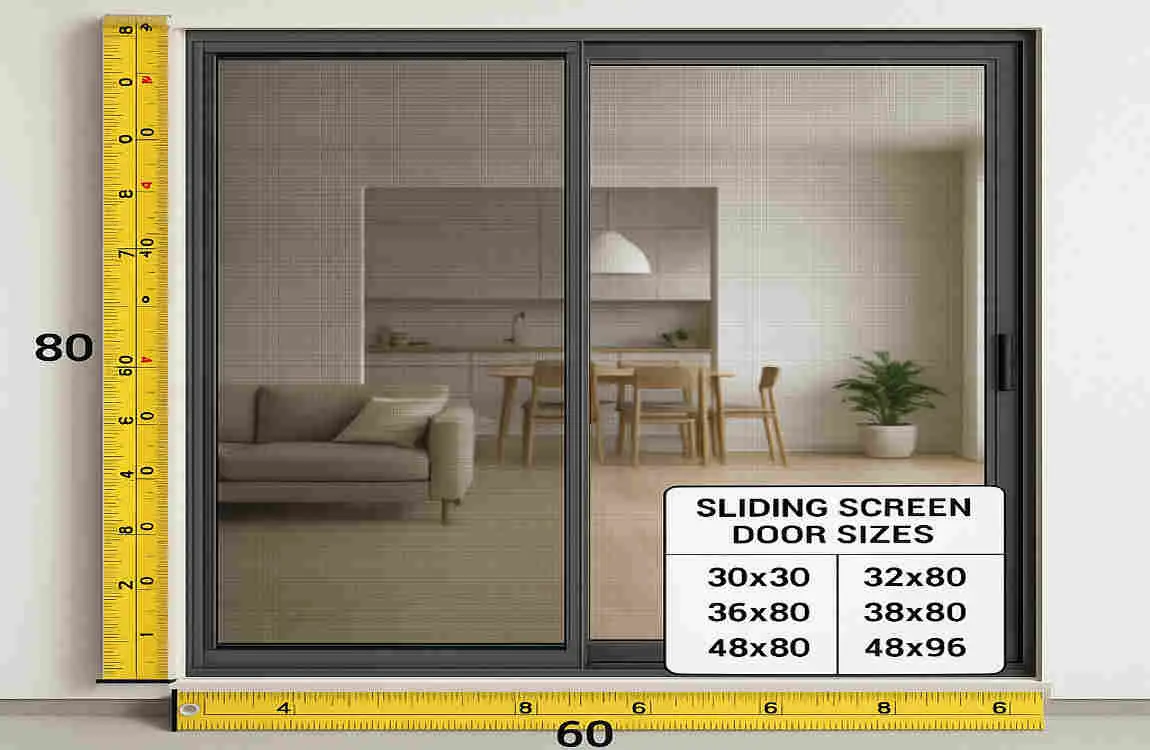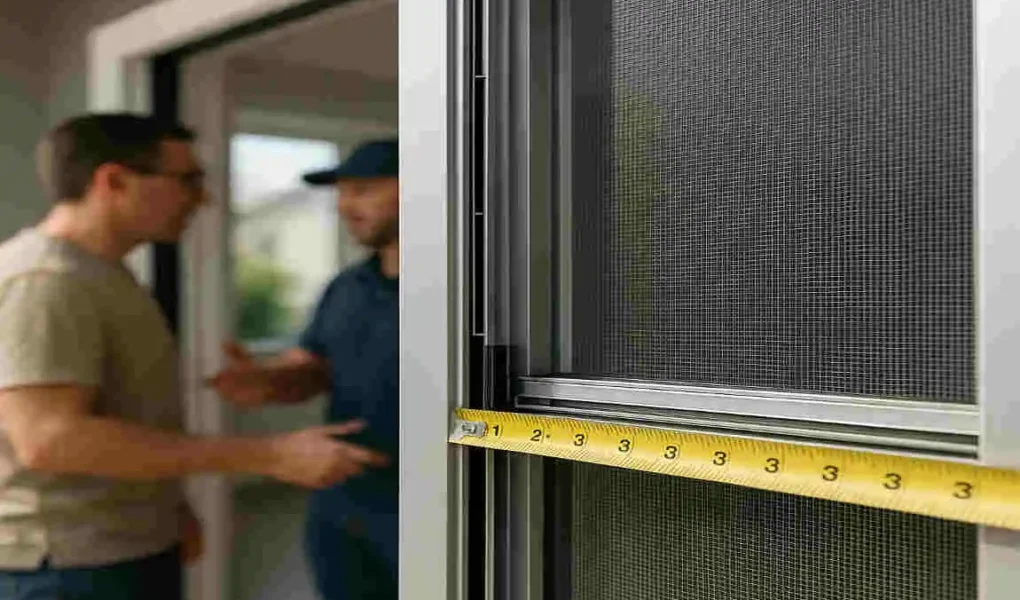Sliding screen doors are a staple in many homes, especially for those who love fresh air, natural light, and easy access to patios or backyards. They offer excellent ventilation, keep pesky insects out, and can even help with energy efficiency. But if you’re thinking about installing or replacing a sliding screen door, one question likely pops up:
Are sliding screen doors standard size?
This is an essential question because knowing whether you can find a door that fits your opening without hassle can save you time, money, and frustration.
By the end, you’ll have a clear understanding of how to choose the perfect sliding screen door for your home.
What Are Sliding Screen Doors?

Definition and Function
Sliding screen doors are doors fitted with a mesh screen that slides horizontally along a track. Unlike hinged doors, they glide smoothly to open or close, making them ideal for spaces where swinging doors might be inconvenient.
You may also read (experience luxury and comfort at amini house).
Common Uses in Homes
Most commonly, sliding screen doors are used on patios, balconies, or any doorway leading to outdoor areas. They allow fresh air into your home while keeping insects, debris, and leaves outside.
Benefits of Sliding Screen Doors
- Ventilation: Let cool air circulate without opening your main door.
- Pest Control: Keep bugs and other critters at bay.
- Energy Efficiency: Reduce the need for air conditioning by allowing airflow.
- Natural Light: Let sunlight in while maintaining protection.
Are Sliding Screen Doors Standard Size?

What Does “Standard Size” Mean?
When we talk about “standard sizes” for doors, we mean common, pre-set dimensions that manufacturers use to make products interchangeable and easy to replace.
Typical Dimensions for Sliding Screen Doors
Most sliding screen doors come in dimensions designed to fit a wide range of homes. Standard widths often range from 30 inches to 48 inches, and heights are usually around 80 to 82 inches.
Variations Do Exist
While there are these standard sizes, the reality is that not every home’s door opening matches these exactly. Therefore, many manufacturers also offer sizes outside the standard range or provide custom sizing options.
Standard Sliding Screen Door Sizes: What to Expect
Typical Width Sizes
- 30 inches (76 cm)
- 36 inches (91 cm)
- 48 inches (122 cm)
Typical Height Sizes
- 80 inches (203 cm)
- 82 inches (208 cm)
Track and Thickness Considerations
Sliding screen doors also come with standard track widths and door thicknesses, usually around 1 to 1.5 inches thick, to fit most door frames comfortably.
Summary Table of Standard Sizes
| Dimension | Size Range (inches) | Size Range (cm) |
|---|---|---|
| Width | 30, 36, 48 | 76, 91, 122 |
| Height | 80, 82 | 203, 208 |
| Thickness | 1 – 1.5 | 2.5 – 3.8 |
Why Sizes May Vary
Differences in Door Frame Sizes
Older homes, custom builds, and different architectural styles mean door frames vary widely. Some might be narrower or shorter than standard sizes.
You may also read (dakota fannings stylish la home the 2025 wallpaper and interior trends to watch).
Door Frame Design
Single-panel or double-panel sliding doors, as well as patio door models, influence the size and type of screen door needed.
Regional Building Codes
Local building codes and construction standards may prescribe specific door dimensions, which can impact the sizes available or recommended.
Measuring Your Opening
Because of these factors, it’s crucial to measure your existing door frame accurately before ordering a sliding screen door.
Custom Sliding Screen Door Options
When Custom Sizes Are Needed
If your door opening is wider, taller, or irregular, a custom sliding screen door might be necessary.
Advantages and Drawbacks
- Advantages: Perfect fit, more design options.
- Drawbacks: Higher cost, longer wait times.
Cost Implications
Custom doors can cost anywhere from 20% to 50% more than standard sizes, depending on materials and complexity.
Materials and Designs
Custom options may include special frame materials, such as wrought iron or exotic woods, and unique mesh types.
How to Measure for Sliding Screen Doors
Step-by-Step Guide
- Measure Width: Measure the width of the door opening from one side of the frame to the other at the top, middle, and bottom. Use the smallest measurement.
- Measure Height: Measure from the floor (or threshold) to the top of the door frame in three places (left, center, right). Use the smallest measurement.
- Measure Track Width: If replacing an existing door, measure the track width as well.
- Double Check: Always measure twice for accuracy.
Tools Needed
- Tape measure
- Notepad to jot down measurements
- Level (optional for precision)
Common Mistakes to Avoid
- Measuring outside the frame instead of inside
- Not accounting for door thickness or track space.
- Rushing measurement without double-checking
Materials and Styles Available for Sliding Screen Doors
Frame Materials
- Aluminum: Lightweight, rust-resistant, and low maintenance.
- Vinyl: Affordable and durable, but less sturdy.
- Wood: Offers aesthetic beauty but requires upkeep.
Screen Mesh Types
- Fiberglass: Standard mesh, good visibility, and airflow.
- Pet-Resistant: Stronger mesh to withstand claws.
- Solar Screen: Reduces heat and glare from sunlight.
Style Options
- Traditional Sliding: Most common style.
- Retractable: Screens roll away when not in use.
- Accordion: Folds to one side, ideal for wide openings.
Each style has its own sizing considerations, with retractable and accordion screens often being custom-sized to fit.
Installation Considerations Based on Door Size
Standard Sizes Simplify Installation
Using a standard-size door typically means hardware and tracks fit perfectly, reducing installation time and difficulty.
Challenges with Non-Standard Sizes
Custom doors may require modified tracks, special hardware, or professional installation due to unique dimensions.
Hardware Overview
- Rollers and guides need to match the door weight and size.
- Locks and handles must fit the frame and door thickness.
DIY vs Professional Installation
- DIY is often feasible for standard sizes with clear instructions.
- Professional help is advised for custom sizes or complex installations.
Where to Buy Sliding Screen Doors in Standard Sizes
Popular Retailers and Manufacturers
- Local home improvement stores: Home Depot, Lowe’s, B&Q (UK)
- Specialty screen door manufacturers: Phifer, Larson
Online vs Local Stores
- Online: More variety and custom options, but measure carefully.
- Local: Easier returns, in-person advice, and sometimes installation services.
Custom Order Options
Many major retailers offer custom sizing through special orders.
| Buying Option | Pros | Cons |
|---|---|---|
| Standard Sizes | Affordable, quick availability | Limited to common sizes |
| Custom Sizes | Perfect fit, variety of styles | Higher cost, longer delivery time |
Maintenance Tips for Sliding Screen Doors of All Sizes
Cleaning and Upkeep
- Clean frames with mild soap and water.
- Vacuum or brush the screen mesh gently to remove dirt.
Screen Repair and Replacement
- Small holes can be patched with repair kits.
- Complete screen replacement may be necessary for more extensive damage.
Troubleshooting Sizing Issues
- Adjust rollers if the door sticks or doesn’t slide smoothly.
- Check track alignment if the door doesn’t close properly.
Conclusion
So, are sliding screen doors standard size? The simple answer is yes and no. Many sliding screen doors come in standard sizes like 30″, 36″, and 48″ wide and 80″ or 82″ tall, making it easy for most homeowners to find a ready-made option. However, due to variations in home designs, door frames, and regional building codes, many homeowners find themselves needing custom sizes.
To ensure the perfect fit, accurate measuring is key. Don’t hesitate to consider custom options if your openings fall outside the standard range — they can offer a tailored look and function that standard doors cannot.
If you’re ready to upgrade or replace your sliding screen door, start by measuring your door opening carefully, then explore local retailers or online stores for both standard and custom solutions.
You may also read (what are the most popular diy home projects in 2025).


